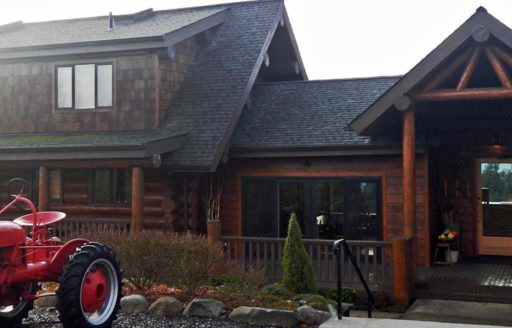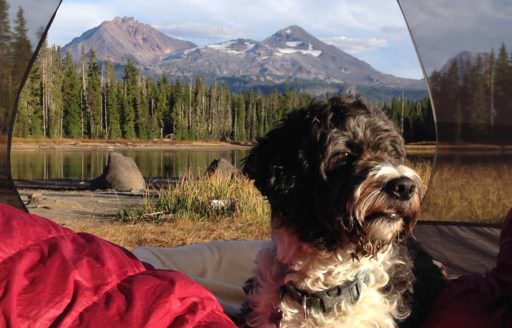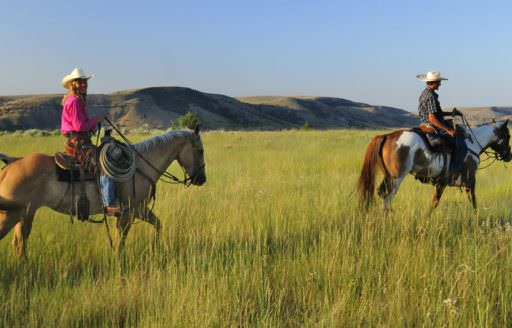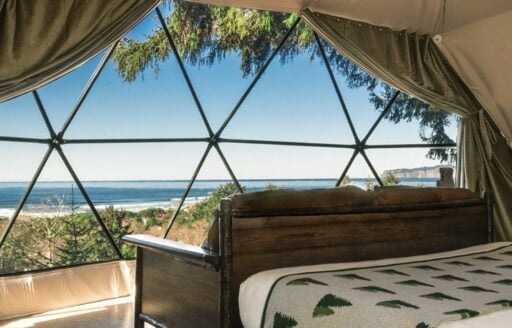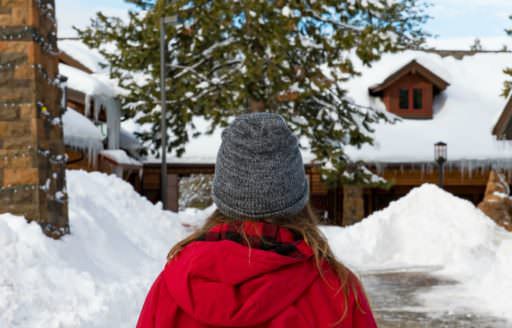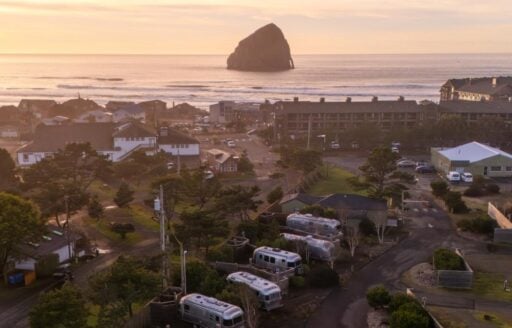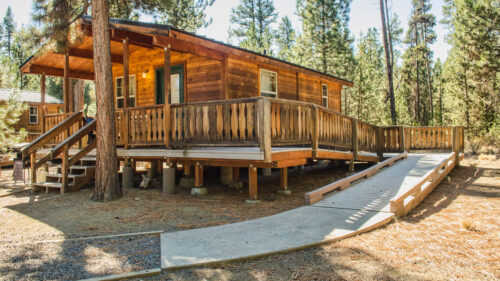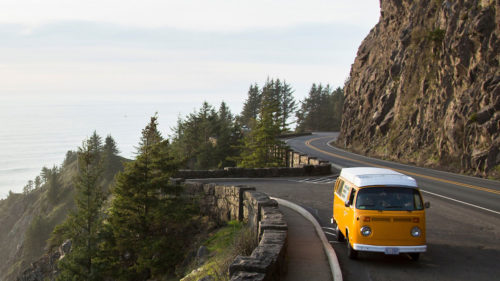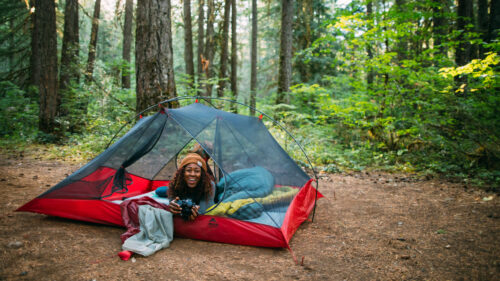As summer turns to fall in Oregon, small towns on the Coast and in the mountains slow down and take a deep breath after the busy season. In the forests and along riverbanks, leaves turn rich hues of red, orange and yellow. Clear skies linger well into October, setting the stage for days filled with brisk hikes, sun-kissed bike rides, relaxing paddling trips and evenings under the stars.
With plenty of availability at most statewide campgrounds, even on weekends, it’s even easier to spend a weekend or longer experiencing the outdoors at some of Oregon’s most beautiful places. To help inspire your next getaway, here’s a guide to how to prepare for a memorable fall camping adventure.
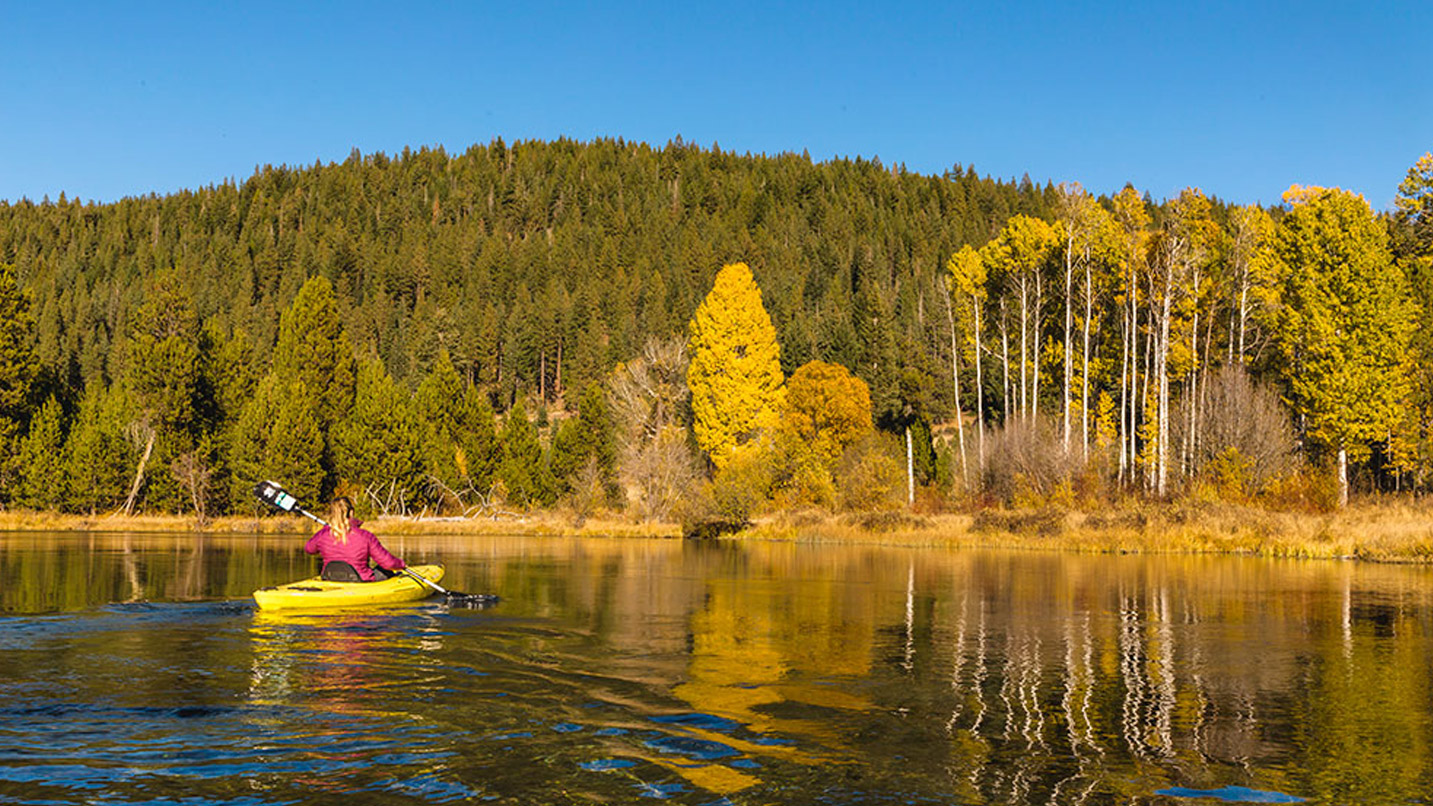
Choose the Perfect Outdoor Option for Your Getaway
You’ll find plenty of types of camping in Oregon. Year-round sites, heated cabins and circular yurts can be found at privately owned campgrounds — such as those operated by KOA Campgrounds in Redmond, Cascade Locks and Grants Pass — and at more than 50 Oregon State Parks throughout the state. Enjoy your choice of yurts and cabins for weekend getaways by booking when reservations open up — six months in advance at state parks — or aim for a midweek trip if you’re planning a last-minute trip. You can also choose to camp alongside locals at parks managed by regional and county partners, such as two popular home bases for water recreation: Oxbow Regional Park outside Portland and Josephine County campgrounds in Southern Oregon.
Many of these campgrounds come with water and electrical hookups, hot showers, flush toilets, running water and on-site firewood sales. Other welcome amenities vary among campgrounds but might include playgrounds, boat launches and ranger-led interpretive programs.
Yurts and cabins, in particular, are available at more than 30 state parks and offer a way to enjoy the outdoors while remaining warm and protected from the elements. Each offers a pleasantly rustic experience with wooden floors, beds with vinyl mattresses and shared restrooms. At most campgrounds, at least a few yurts and cabins are pet-friendly. Some of the more deluxe offerings come with private bathrooms, kitchenettes and — at Umpqua Lighthouse State Park — an in-cabin television and DVD player.
For a more rugged experience, consider booking a site at U.S. Forest Service campgrounds across Oregon. At these more primitive sites, drinking water may be available and vault toilets are typically present. Otherwise, amenities — and crowds — tend to be sparse as autumn settles in. Some campgrounds may close in late summer or early fall, or may see a reduction in services as the weather cools. If camping at elevation, such as on Steens Mountain or in the Cascade Range, check local forecasts or call the land manager to check conditions for possible early-season snow.
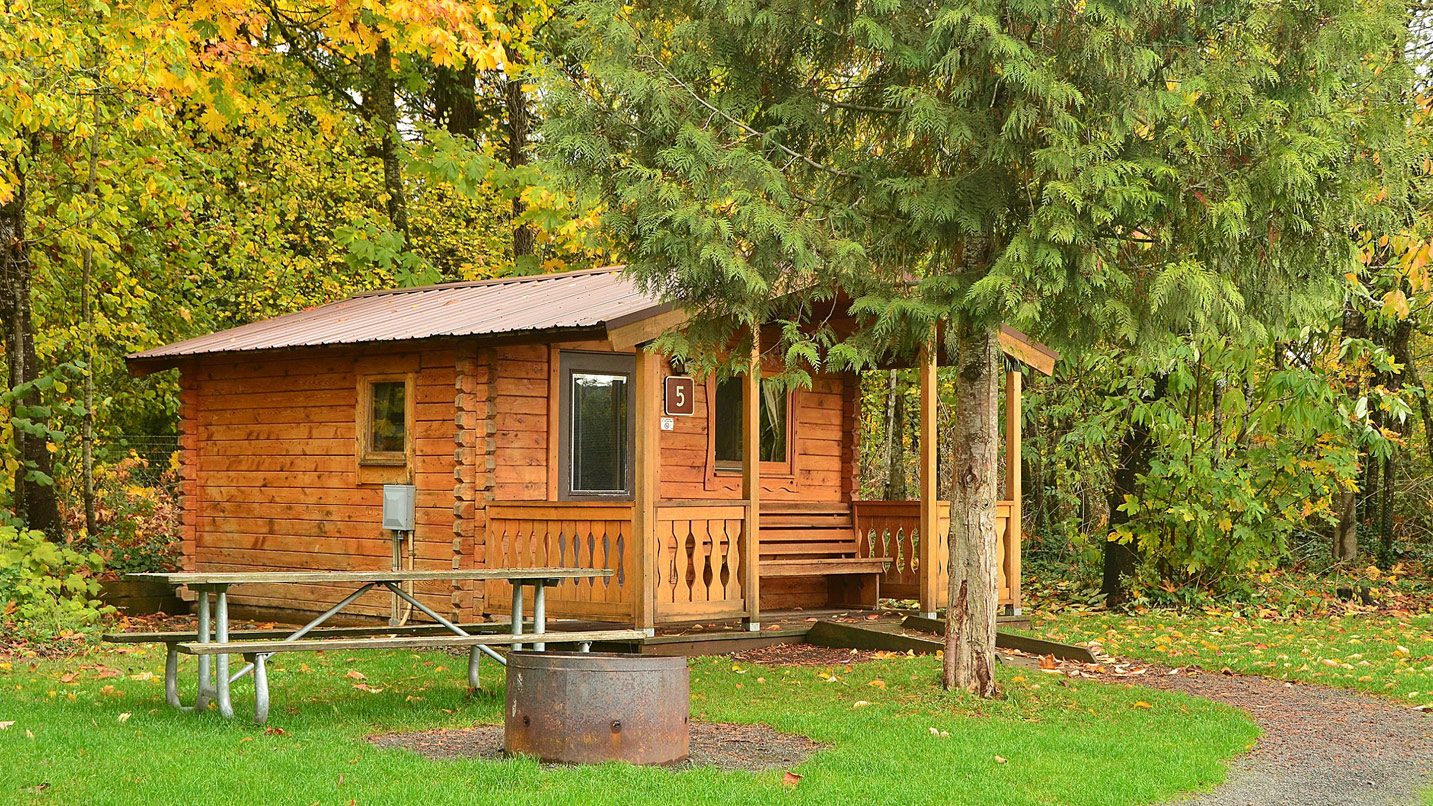
Embrace Fall in Each Oregon Region
Throughout the state, you’ll find it easy to extend your stay after the summer crowds go home, as well as fewer mosquitoes and more solitude. These are all good reasons to take a vacation anywhere in Oregon this fall, but you’ll also find unique experiences in each of Oregon’s regions.
On the Oregon Coast, fall means temperatures in the 50s and 60s plus more options to book yurts and cabins at 16 state parks throughout the region. Choose from among more than 250 sites at the popular Nehalem Bay State Park at the southern edge of Manzanita, which also hosts nearly 20 yurts — half of which are pet-friendly. The campground reopened in 2025 after an extensive closure, during which crews added restroom and shower buildings, improved wheelchair accessibility at nine campsites, and reworked the park’s entry road to enhance traffic flow.
Inland, delight in the changing colors of the season at numerous parks around Portland and in the Willamette Valley. Just south of Newberg, oak and maple trees erupt in electric yellows and reds every October at Champoeg State Heritage Area, where campers can choose from among more than 80 sites, as well as a handful of cabins and yurts. West of Portland, colorful foliage displays pop well into early November along the paved, car-free 21-mile Banks-Vernonia State Trail. The trail runs through L.L. Stub Stewart State Park, where 15 heated cabins are popular year-round stays.
Fall foliage is likewise vibrant throughout Eastern Oregon, where dogwood groves turn deep red and yellow-leaved, quaking aspen trees seem to glow in the dark. On the slopes of Steens Mountain, Fish Lake Campground hosts roughly two dozen basic campsites — open mid-June to October — along its namesake reservoir and in the midst of stands of colorful aspen.
Soak up late-season sunshine and a quiet respite from your campsite or yurt at Tumalo State Park near Bend. Stay up to admire the wonders of the cosmos over the Oregon Outback Dark Sky Sanctuary when you pitch a tent or park your RV at the Cottonwood Recreation Area Campground near Lakeview through mid-October, after which services may not be available until spring due to winter conditions. Farther north, you’ll be close to the waterfalls of the Columbia River Gorge when staying at Ainsworth State Park, open through October.
Wherever you camp, fall makes an ideal time to see wildlife — such as elk on the Oregon Coast, pronghorn on the slopes of Hart Mountain and migrating birds across the state.
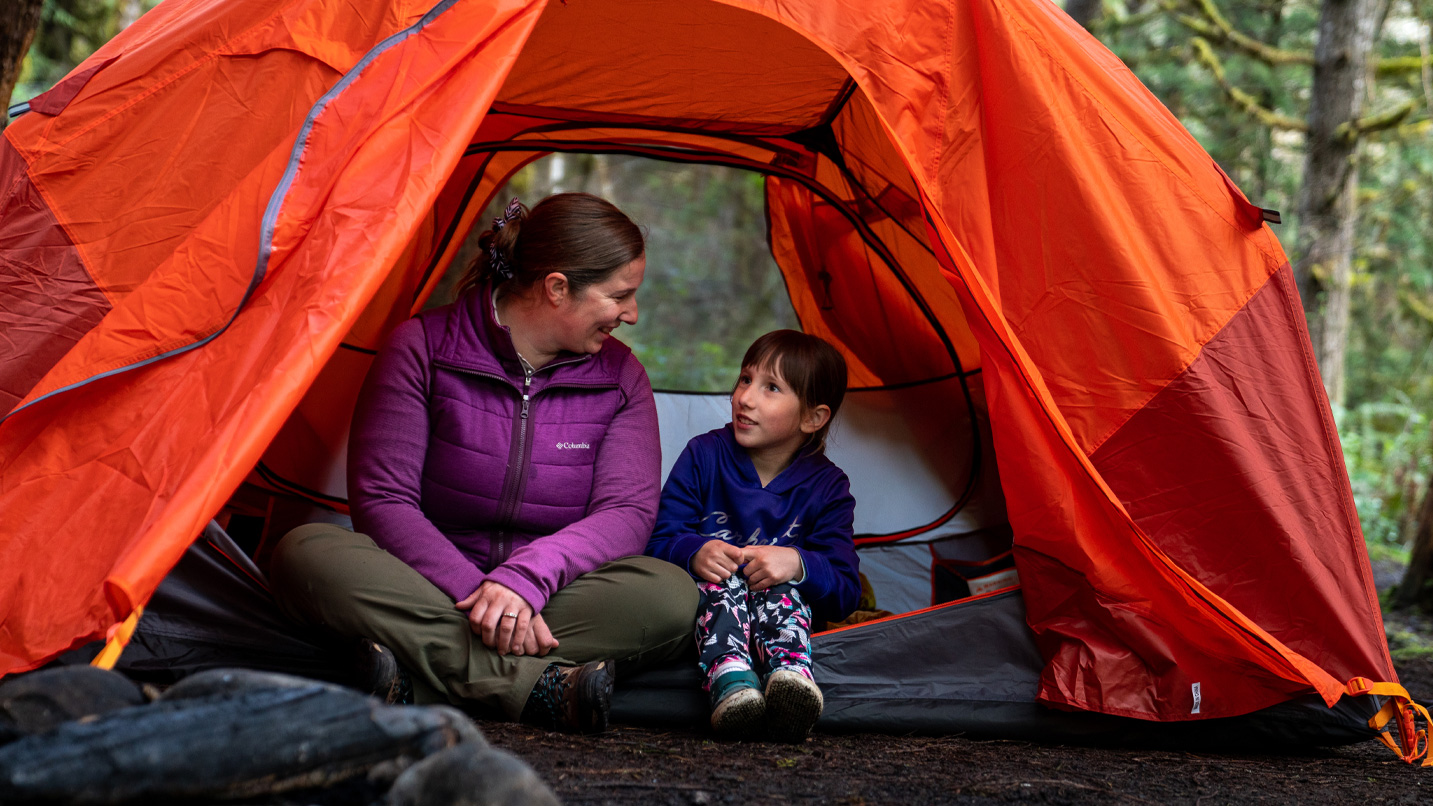
How to Check Conditions and Pack Smart for Fall
Keep a few easy tips in mind while planning a fall getaway. Soon after making a reservation, check your campground’s individual webpage for updates about construction, closures and wildfire or weather-related alerts. If you’re booking a more primitive site on U.S. Forest Service land, visit the campground’s official website — or its page on Recreation.gov — for any potential seasonal closing dates and other notices. In some cases, showers or running water may be turned off for the season each fall.
As your trip approaches, check the weather forecast and TripCheck for road conditions that may impact your travels. Visit the Oregon Wildfire Response & Recovery website for the latest updates and emergency alerts on wildfire activity.
Plan to have gear that’s particularly suited to fall: Be sure to bring layers of clothing for yourself in case of chill or drizzle, but make sure your tent has layers, too. Pack a rainfly so a sudden storm won’t catch you unaware, and put a tarp down before pitching the tent for warmth and protection against water seepage. Bring a mattress pad or an air mattress to create a buffer between yourself and the cool ground, as well as a sleeping bag with a temperature rating of 20F to 30F for cold nights.
With autumn comes shorter days and longer nights, so be sure to pack along at least two light sources, such as a lantern, headlamp and flashlight. Since the sun sets in the late afternoon or early evening, try setting up camp earlier than you think you need so you’re not searching in the dark for tent poles, fire starters or other essential supplies.



